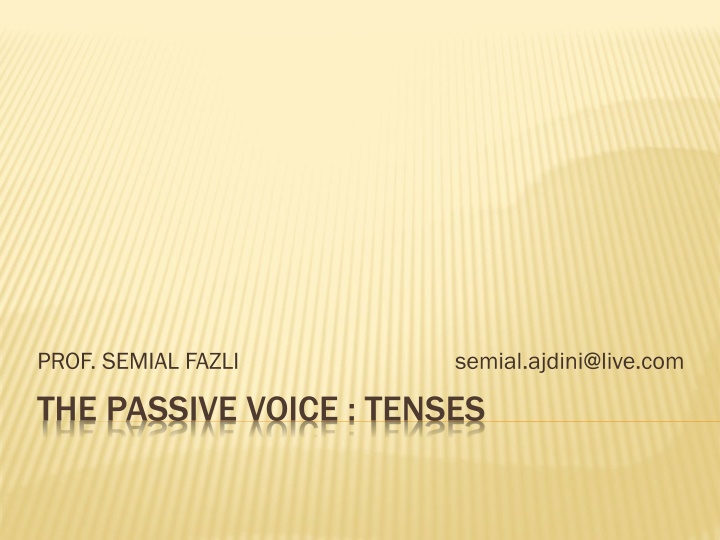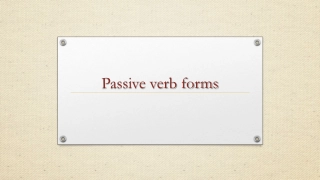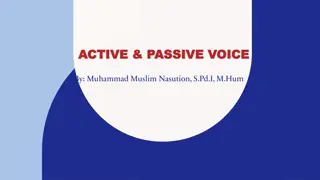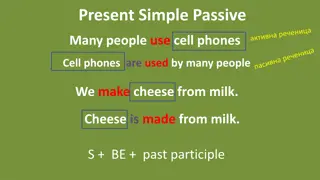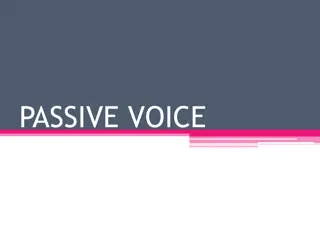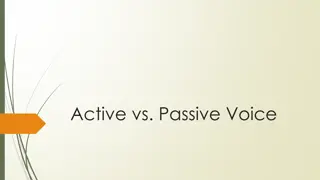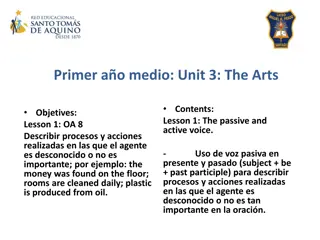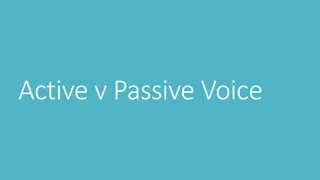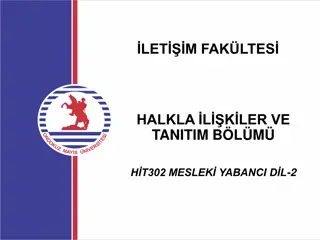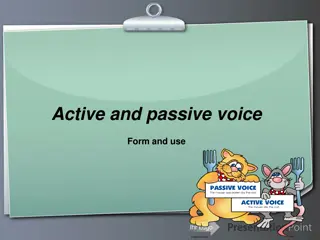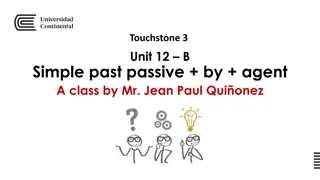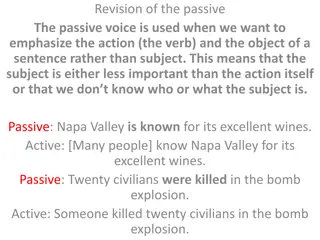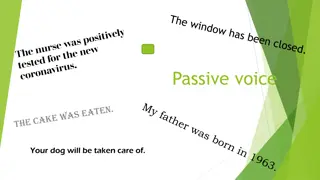Passive Voice Usage in English
Passive voice is used in English to emphasize the action over the agent. Learn when and how to utilize the passive voice, including verb formations and exceptions, such as when to use "by" or "with" to mention the agent or tool. Explore examples and understand how to transform active sentences into passive structures.
Download Presentation

Please find below an Image/Link to download the presentation.
The content on the website is provided AS IS for your information and personal use only. It may not be sold, licensed, or shared on other websites without obtaining consent from the author.If you encounter any issues during the download, it is possible that the publisher has removed the file from their server.
You are allowed to download the files provided on this website for personal or commercial use, subject to the condition that they are used lawfully. All files are the property of their respective owners.
The content on the website is provided AS IS for your information and personal use only. It may not be sold, licensed, or shared on other websites without obtaining consent from the author.
E N D
Presentation Transcript
PROF. SEMIAL FAZLI semial.ajdini@live.com THE PASSIVE VOICE : TENSES
WHEN WE USE THE PASSIVE VOICE? When the action is more important than who or what is responsible for it. a. Example: Two people were injured during the robbery. When we don t know the agent or it is not important. a. Example: You can use the computer now. It was repaired yesterday.
THE VERB BE + PAST PARTICIPLE TENSE TENSE ACTIVE ACTIVE take/takes am/are/is taking took was/were taking have/has taken has taken will taken PASSIVE PASSIVE am/are/is taken am/are/is being taken was/were taken was/were being taken have/has been taken had been taken will be taken Present Simple Present Continuous Past Simple Past Continuous Present Perfect Simple Past Perfect Simple Future Simple
NOTE! There isn t passive form for: 1. Future Continuous. 2. Present Perfect Continuous. 3. Pas Perfect Continuous.
NOTE! The object of the verb in the active sentence become the subject of the verb in the passive sentence. a. Example: They are watching us! (in active) We are being watched! ( in passive)
TWO OBJECT INTO THE PASSIVE VOICE In the passive sentence then we use a suitable preposition (to, for, etc.) Example: He gave me a video camera. (active) I was given a video camera. (passive) A video camera was given to me. (passive) a.
BY AND WISH Sometimes is important to mention the agent ( who or what is responsible for the action) in a passive sentence and we use the word BY. Example: a. Sara invented the telephone. b. The telephone was invented by Sara.
Sometime we want to mention a tool or material in the passive sentence and we use the word WITH. Example: a. The window was broken with a stone. b. The room was painted with a new kind of paint.
HOMEWORK The examples D and E on page 113.
